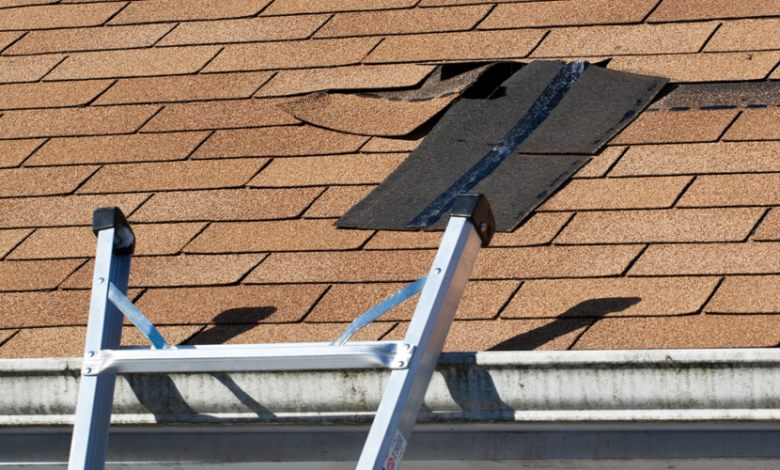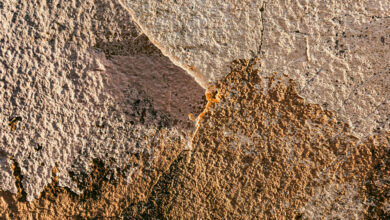Hidden Signs of Storm Damage Every Homeowner Should Know

It’s easy to spot the major damage when a big storm passes. But what about the subtle signs that often go unnoticed? Identifying these early can save you from costly repairs down the road. In this blog post, we’ll help you uncover those hidden clues of storm damage in your home.
The Importance of Early Detection
Storms can wreak havoc on homes, causing damage that isn’t always immediately visible. Early detection is crucial for several reasons:
- Preventing Further Damage
- Reducing Repair Costs
- Ensuring Safety
Homeowners can significantly safeguard their homes and their financial well-being by adopting a proactive approach. Understanding the common issues to watch for and implementing regular maintenance can make a substantial difference in protecting one’s investment.
Recognizing Exterior Signs
Damaged or Missing Shingles
After a storm, take a good look at your roof. Even if all shingles seem intact, there could be more subtle signs to watch for.
Look for curled, cracked, or bruised shingles. These may indicate wind or hail damage. Sometimes, the granules on the shingles—which protect your roof from UV rays—can be stripped away. Accumulations of these granules in your gutters or around your home’s foundation are a telltale sign.
Dents on Metal Surfaces
Metal surfaces around your home, like gutters, downspouts, and roof vents, can tell a story. Dents in these areas are often caused by hail. Even if they seem minor, these dents can compromise the integrity of your home’s exterior.
Check your air conditioning unit as well. Hail can significantly damage the condenser fins, reducing their efficiency and lifespan.
Cracks in Siding or Stucco
Strong winds and airborne debris can result in damage to your home’s siding or stucco, causing cracks. These cracks may not be immediately noticeable, but they allow water to seep in, leading to mold and structural damage.
Run your hand along the siding and look closely for new cracks or loose panels. For stucco, inspect for hairline fractures or chips that could indicate underlying issues.
Gutter Damage
After a storm, inspect them for damage. Bent or detached gutters can pool water around your foundation, increasing the risk of flooding and structural damage.
Also, check for blockages caused by debris. Clogged gutters can overflow, causing water damage to your roof and walls.
Identifying Interior Clues
Water Stains on Ceilings or Walls
Water stains on ceilings or walls inside your home are a clear sign that water is getting in somewhere. Even if these stains seem minor, they can indicate more significant issues, such as a leaking roof or damaged flashing.
Use a flashlight to inspect dark corners and closet ceilings where water damage is not immediately visible.
Musty Smells
A musty smell in your home is often a sign of mold or mildew, which thrives in damp conditions. If left unchecked, mold can proliferate, leading to serious health problems. Additionally, it can severely compromise the structural integrity of buildings, causing damage that may be costly to repair.
Check basements, crawl spaces, and attics for musty odors. These areas are more prone to moisture build-up and can give you a clue about hidden water damage.
Leaks in the Attic
The attic is one of the first to show signs of roof damage. During your inspection, look for any signs of leaks or water stains. Even small drips can lead to significant problems over time.
Check the insulation as well. Wet or compacted insulation can reduce your home’s energy efficiency and indicate water intrusion.
Damaged Window Frames
Storms can damage your windows and frames. Look for cracks, warping, or peeling paint around your windows. These signs can indicate that water has penetrated the frame, which can lead to further damage and energy loss.
Open and close your windows to ensure they’re operating smoothly. Sticking or difficulty in movement can be another sign of frame damage.
Steps to Take After Identifying Damage
Document the Damage
Once you’ve identified storm damage, it’s vital to document it thoroughly. Take clear photos and videos of all affected areas. This documentation will be crucial when filing an insurance claim.
Include close-up shots of the damage and wider shots to show the context.
Contact Your Insurance Provider
Contact your insurance provider as soon as possible to report the damage. Provide them with all the documentation you’ve gathered and follow their instructions.
Keep a record of all communications with your insurance company, including dates, times, and the names of the representatives you speak to.
Secure Temporary Repairs
Cover broken windows with plywood or tarps, and use plastic sheeting to protect damaged roofs.
Be sure to keep receipts for any materials you purchase and document the temporary repairs.
Schedule a Professional Inspection
An experienced contractor can uncover concealed damage and offer a comprehensive estimate for lasting repairs. It’s important to select a reputable contractor who has expertise in fixing storm damage. They can also help you understand the scope of work needed and assist with the insurance claim process.
Early detection of storm damage is crucial for protecting your home and avoiding costly repairs. By being vigilant and acting swiftly, homeowners can protect their investment, ensuring their residence continues to be a secure and cozy sanctuary.
If you’ve noticed any signs of storm damage, don’t wait. Take action now to document, repair, and protect your home. If you’re unsure where to start, consider hiring a professional like Knox Services for an inspection.




